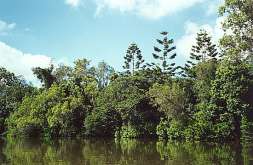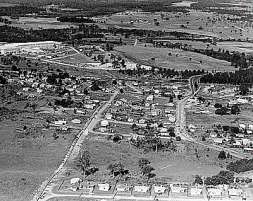Pine Rivers History & Heritage
The First Inhabitants
Prior to European settlement, the Pine Rivers area was home to a number of Aboriginal clans belonging to the Turrbal, Kabi (Kabi Kabi or Gubbi Gubbi) and Waka (Wakka Wakka) language groups. These groups enjoyed a considerable amount of social interaction, especially at the time of the bunya feasts in the Blackall Range and the Bunya Mountains.
There were ceremonial bora rings at Samford, Samsonvale, Dayboro, Mount Pleasant, Laceys Creek, Petrie, Keperra and Kippa-Ring where neighbouring groups combined to carry out rituals.
During the mid 19th century, Dalaipi was a distinguished elder of the North Pine clan of the Turrbal people. It was Dalaipi, then nearly sixty years of age, who encouraged one of the district's best-known pioneers, Tom Petrie, to establish a cattle run in the North Pine area during the late 1850s.
Archaeological evidence, as well as the oral traditions of Queensland Aboriginal people, indicate that these first inhabitants occupied the land for many tens of thousands of years. Ultimately, however, the local Aboriginal population rapidly declined in numbers due to the effects of introduced diseases, alcoholism and dispersal.
European Discovery

Hoop Pines emerging above riparian vegetation, North Pine River. The Pastoral Pioneers
Settlement of the Pine Rivers region had to await the closure of the Moreton Bay convict settlement in 1842, although some preliminary surveying of the region
Closer Settlement
During the 1850s, in response to considerable pressure from immigrants who were clamouring for access to land, the New South Wales Government decided to survey and sell blocks of land suitable for more intensive farming.
Land Selection
In 1868, a major change in settlement commenced following the passing of the Crown Lands Alienation Act.
The Pine Settlements
Road access to the Pine Rivers region was limited until the discovery of gold at Gympie in 1867. Prior to this time, the first roads in the area crossed the South Pine River at Cashs Crossing and the North Pine River at Gordons Crossing or Youngs Crossing.
World War II
During World War II, large numbers of troops were stationed in the Pine Rivers Shire for varying lengths of time; it has been estimated that over 50,000 men spent some time in the Shire in training or rest and recreation camps at a time when the civilian population was only about 4,800.
Post-War Changes

Petrie, showing the newly constructed APM Mill at the top left, 1957. After World
Urban Growth
During the 1960s, the rural nature of the Shire began to change rapidly as sustained residential development commenced.
Step Back in Time
In order to discover our origins and learn more about our pioneering past, visit Old Petrie Town (formerly known as the North Pine Country Park) situated on Dayboro Road, Whiteside, via Petrie, which is the home of many of the Shire's historic buildings and the site of many community activities.
